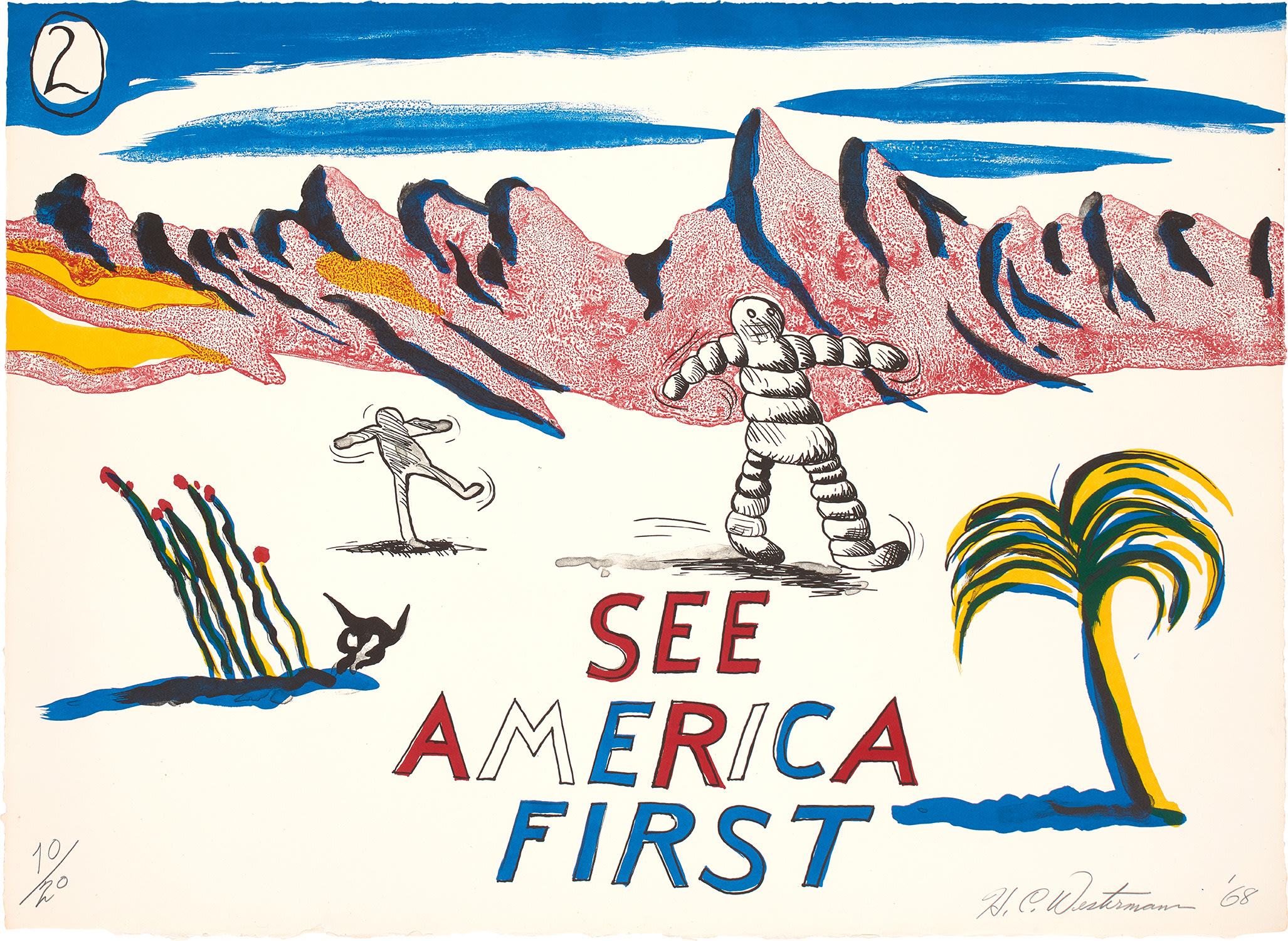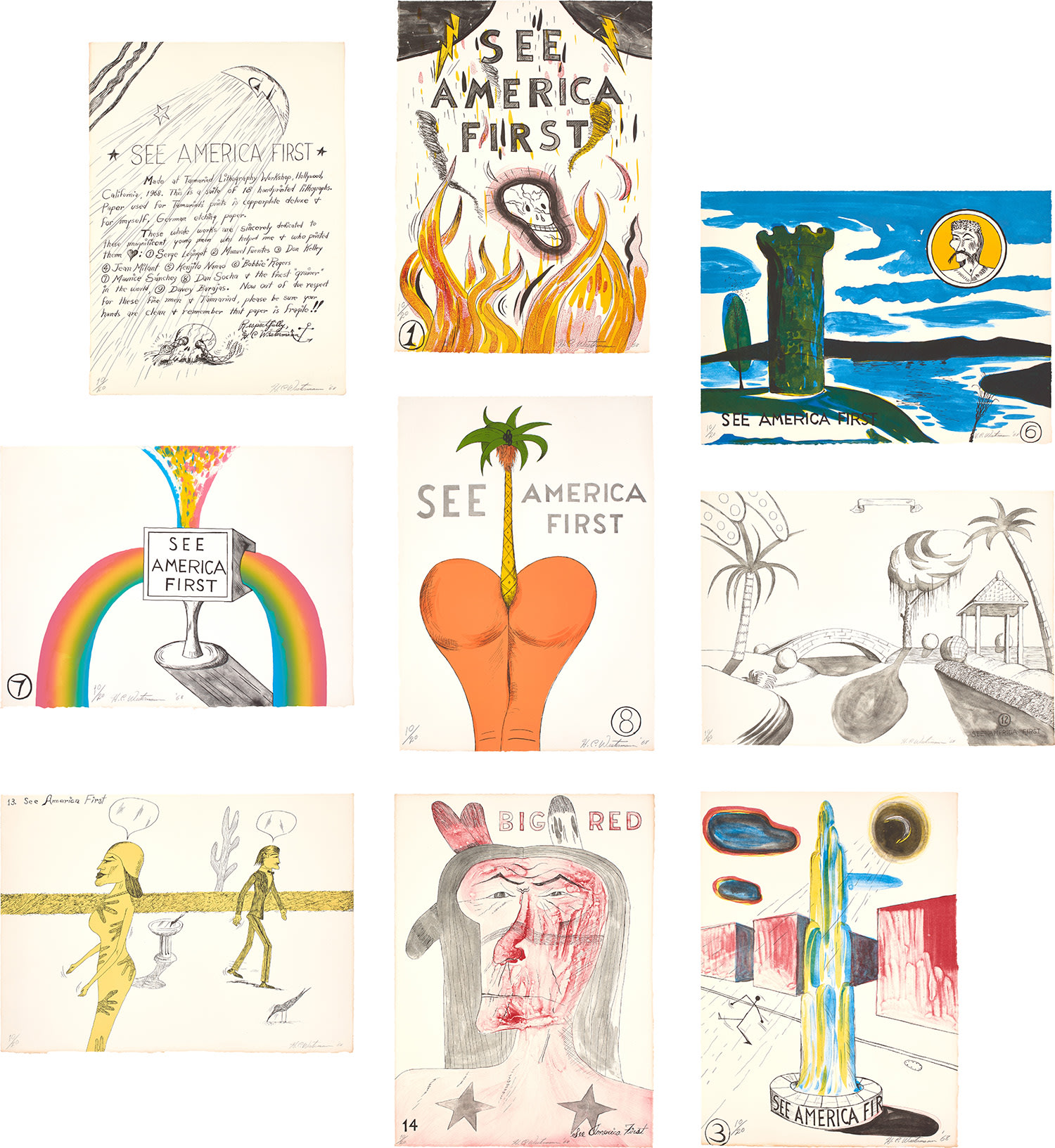





Property from The Museum of Modern Art, New York, Sold to Benefit the Acquisitions Fund
29
H.C. Westermann
See America First (T. 2425-2444, A. & B. 14B-S)
1968
The complete set of 17 lithographs in colors, on Copperplate Deluxe paper, the full sheets, with title page and colophon, lacking original wood portfolio.
all S. 22 x 30 in. (55.9 x 76.2 cm) five vertical
All signed, dated and numbered 10/20 in pencil (there were also 2-4 artist's proofs for each), published by Tamarind Lithography Workshop (with their blindstamp), Los Angeles, all unframed.